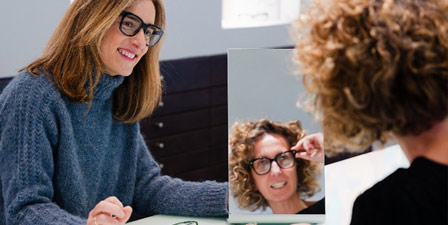By Danielle Crull, ABOM

The year 2020 rolled around and we were ready for vision awareness and education, but instead we found ourselves learning about viruses, social distancing, disinfecting, and masking. Suddenly, we all got a taste of what it is like to be some of the most vulnerable in our society. When I spoke with some of my high-risk patients during this time, they'd often say, "It's really no different for us. We've been doing this all along." They were washing their hands, wearing masks, staying away from crowded high-risk places, and overall being conscientious about their health and wellbeing, whether for themselves or for their child's sake.
According to the NIH (National Institute for Health) study in 2021, as many as 6.6% of American adults are immunocompromised. That's approximately 1 in 15! In 2020, the lives of these families were highlighted for all of us to see, like a corneal abrasion under a slit lamp. But these people are still here today and every day in our offices and stores. If hindsight is 20/20, then how have we changed in response to 2020?
Where is that frame disinfector? Are all the masks and gloves gone? How do people who are immunocompromised communicate this to you so special precautions can be taken? Are you back to working even when you're feeling sick because it's NOT COVID-19? Is the hand sanitizer full or empty? Still saying the alphabet while washing hands?
This week I had the mom of one of my patients apologize for canceling her appointment last week. She said, "I'm so sorry for canceling. My daughter woke up feeling sick and had a runny nose. I didn't want to bring her in here and get anyone else sick. I know you help so many patients that are immunocompromised." I thanked her for her thoughtfulness and was truly impressed that she was so caring, because we do try to make an environment that is safe for everyone. This includes the most vulnerable among us and she saw that.
Since 2020 we've made significant changes that I believe have been for the better in an effort to make our place more available for the chronically ill and immunocompromised. The first step is making sure that patients have a way to tell us that they are among those who need special precautions. The next step is to make sure we have the resources available to help them at the level of care they need. That could be outside at their car, or with masks and gloves, or disinfecting every frame before they try it on. It's important to be flexible and thoughtful. The third step is making sure your non-immunocompromised patients understand the environment you are trying to create and enlisting their help by encouraging hand sanitizing and mask wearing when symptomatic.
The previous study by the NIH was done in 2013 and noted that approximately 2.7% of American adults were immunocompromised. That's quite an increase in 2021 to 6.6%. There's not enough data to determine why this increase has occurred or is occurring. What we do know is that with this increase, we are encountering more and more patients in our practices every day who will need this extra care.
So if Hindsight IS 2020, what has it made clearer to you?












